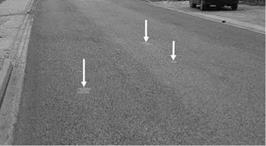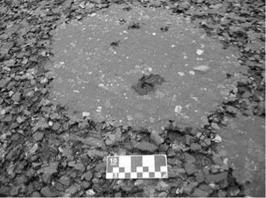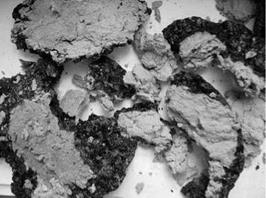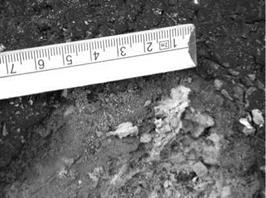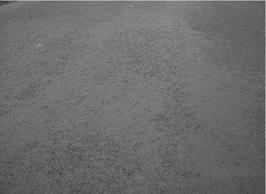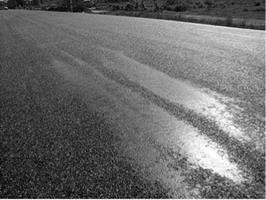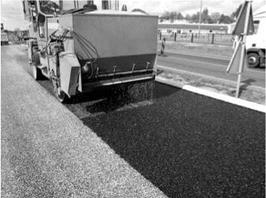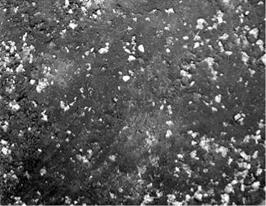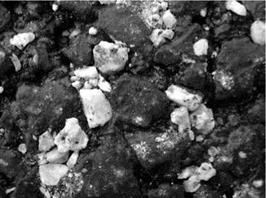TOO CLOSED SMA STRUCTURE
It happens that, after the completion of an SMA course, a sight reminiscent of mastic asphalt may unfold before the observer’s eyes (Figure 11.8). Such a closed SMA structure means utter failure and the likely removal and replacement (possibly by recycling) of the layer. This kind of problem is directly connected to the discussion in Section 11.2 about fat spots of mastic (without segregation) but usually occurs over most or all of the layer.
Reasons for such a significant setback include the following:
• Errors of mixture design
• Too much mastic in relation to the voids’ volume among the compacted coarse aggregates
• Upward designing of a gradation curve in the filler-sand fraction
• Use of weak aggregates
• Errors of compaction—application of excessive compaction energy (too high a vibration amplitude), which causes the crushing of grains and their closer arrangement, thus reducing voids meant for mastic
• A combination of these two causes—an application of weak aggregates is conducive to such a superposition; then we can speak about an error of design (selection of aggregates) and an error of placement (excessive energy of compaction).
If we happen to observe a large, closed SMA surface accompanied by a distinctive odor, it is worthwhile reading Section 11.11.






